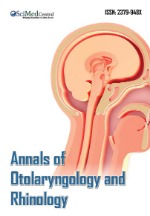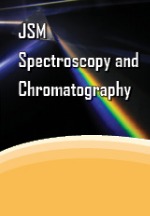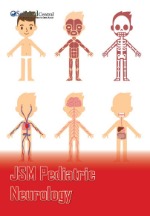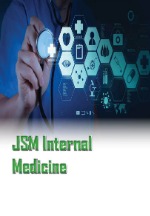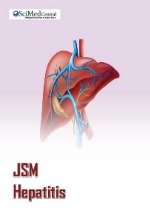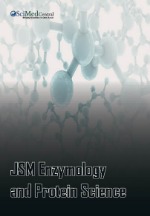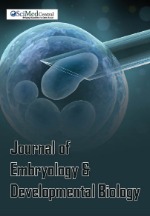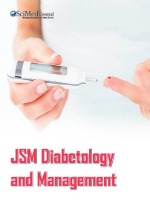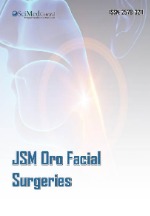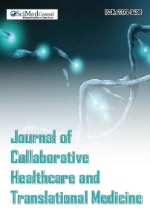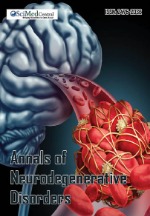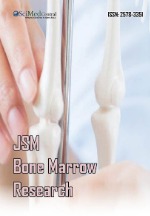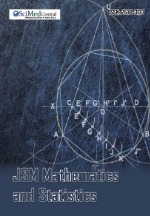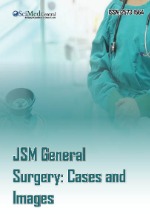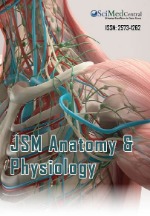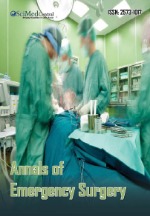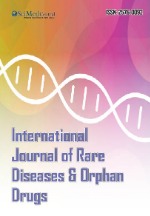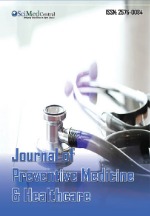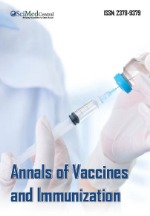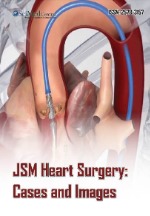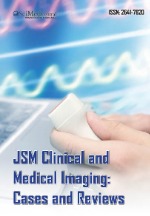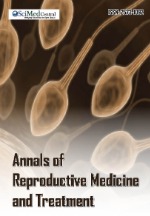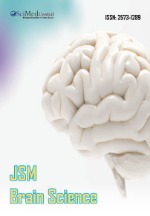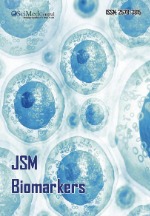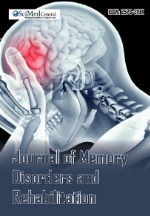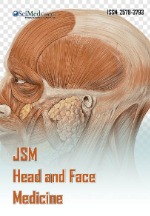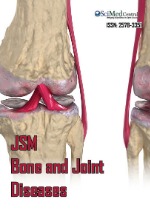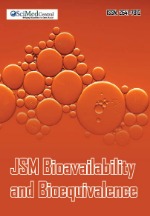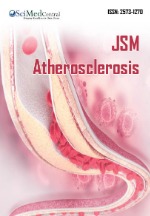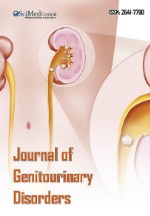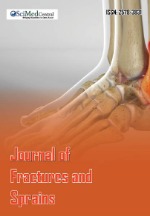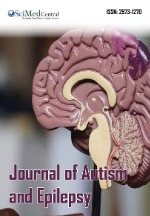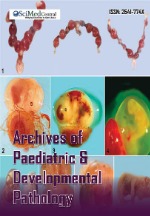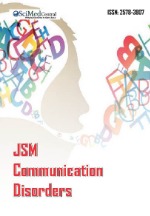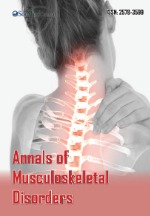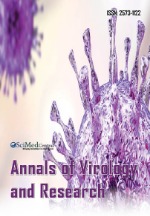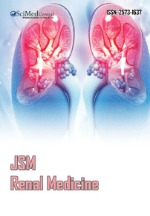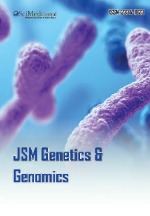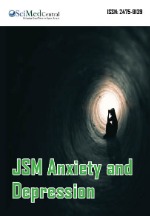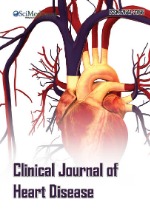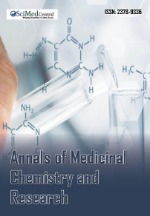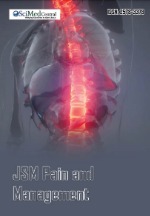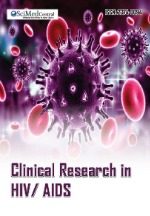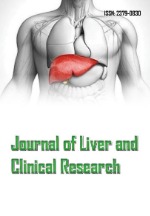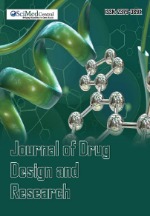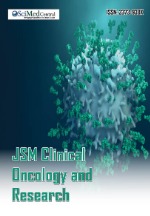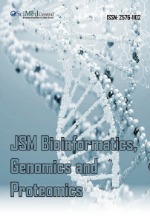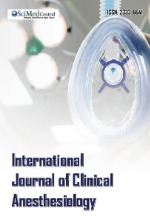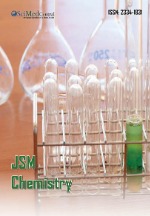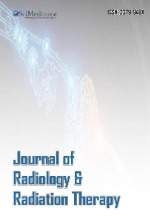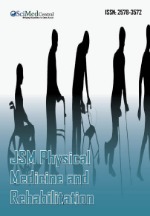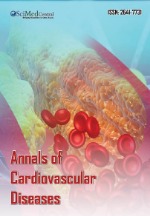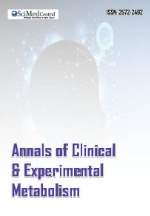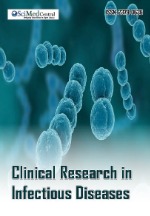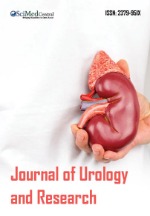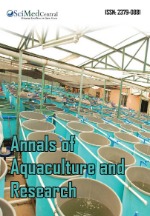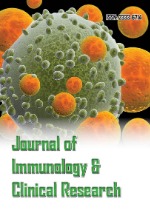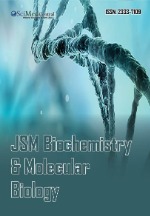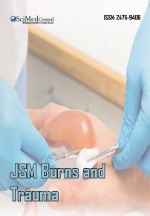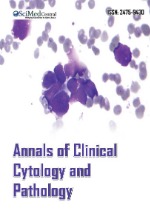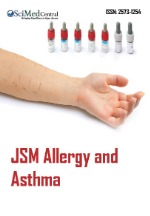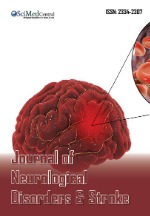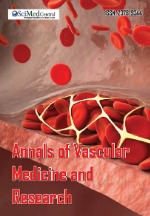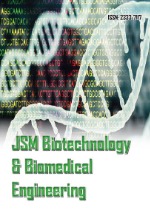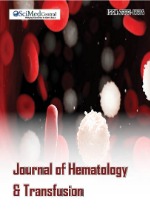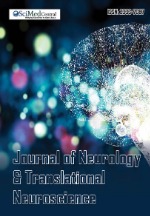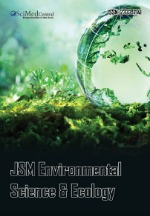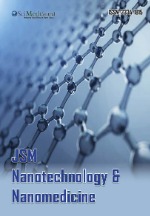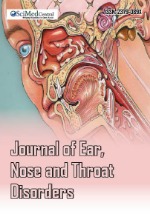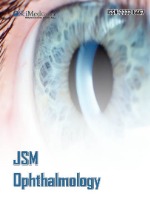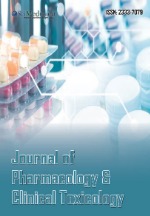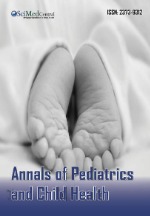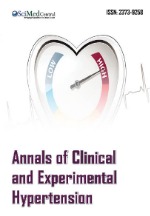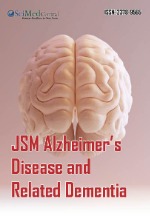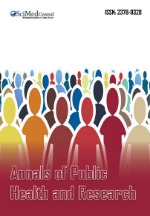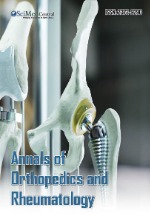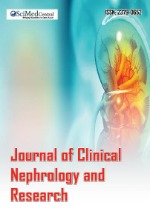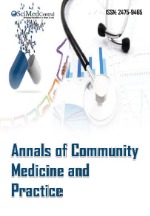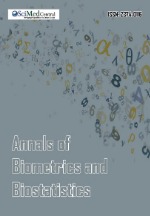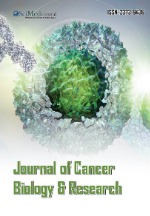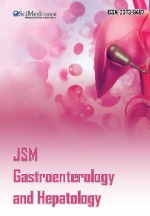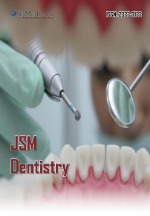Programmed Death 1 Inhibitor Combined with Radiotherapy on the Expression of P53 and Epidermal Growth Factor Receptor and Prognosis of Breast Cancer
- 1. School of Medicine, Nanjing University of Chinese Medicine, China
Abstract
Introduction: It was to investigate the effect of Programmed Death 1(PD-1), inhibitors combined with radiotherapy on the expression of P53 and Epidermal Growth Factor Receptor (EGFR), in Breast Cancer (BC). The impact of radiation treatment on BC patients’ prognosis was examined.
Material and Method: The data of BC patients admitted to Nanjing University of Chinese Medicine from April 2022 to April 2023 were retrospectively analyzed. The clinical data of the patients were extracted, and 104 patients were randomly enrolled. The survival time and complications of patients were followed up. The expression levels of P53 and EGFR in tumor tissues and prognosis of patients treated with PD-1 inhibitor combined with radiotherapy were analyzed.
Result: The expression level of EGFR in the Joint Group (JG) was visibly lower as against the Control Group (CG); the median Progression-Free Survival (PFS) of the JG was visibly longer as against the CG (all P < 0.05). The optimal cut-off values of P53 positive rate and EGFR level before combined treatment were 10% and 96.21ng/mL. In addition, the median PFS of individuals with low EGFR in the JG was 7.3, which was visibly higher as against individuals with high EGFR. The level of EGFR before PD-1 inhibitor treatment was an independent cause of risk affecting the prognosis of patients.
Conclusion: PD-1 inhibitor plus radiotherapy can effectively inhibit the expression of EGFR in tumor tissues of BC patients and visibly improve the prognosis.
KEYWORDS
- PD-1 inhibitors
- Radiotherapy
- P53
- EGFR
- BC
CITATION
Wu Y (2025) Programmed Death 1 Inhibitor Combined with Radiotherapy on the Expression of P53 and Epidermal Growth Factor Receptor and Prognosis of Breast Cancer. Ann Breast Cancer Res 9(1): 1030.
INTRODUCTION
BC is one of the most common female malignancies worldwide, causing a visible health burden among women. According to the WHO, the incidence of BC has been on the rise in most countries since 2018, and among patients aged ≥50 years, Japan, Slovakia, and China have the most prominent increase in incidence reports [1]. The risk factors of BC include lifestyle, genetic and environmental factors. Some studies have also suggested that alcohol can contribute to the risk of BC [2]. In the treatment of BC, surgery, radiotherapy and chemotherapy, targeted therapy, and other methods can improve the survival rate of patients. Immunotherapy is a research hotspot of cancer treatment, which can improve the microenvironment of tumor tissue, thereby improving the immune function of patients, to block the development of cancer [3]. Single radiotherapy has certain limitations in the treatment of cancer, and long-term radiotherapy may cause serious adverse reactions and drug resistance. PD-1 inhibitors plus radiotherapy have shown good efficacy in the clinical treatment of BC, but the effect on the expression of P53 and EGFR in BC has not been elucidated. Therefore, the research on the expression of P53 and EGFR and prognosis analysis of BC has important clinical significance and scientific value.
PD-1 inhibitors have attracted much attention in the immunotherapy of cancer. Clinical studies have shown that antibodies targeting the immune checkpoint of the PD-1/PD-L1 pathway have a good effect on the treatment of cancer diseases [4]. PD-1 is an immune checkpoint molecule. Most studies have shown that PD-1/PD-L1 signaling pathway blockade therapy can activate the immune ability of cytotoxic T effector cells to BC cells. PD-1 inhibitors promote the immune function of T cells to tumor cells by inhibiting the interaction between PD-1 and its ligand PD-L1 to achieve the therapeutic effect [5]. At present, there are many PD-1 inhibitors available in clinical practice, including Pembrolizumab and Tislelizumab injection. Pembrolizumab monotherapy has been shown in certain studies to be effective in treating advanced non-small cell lung cancer patients by slowing down the progression of the illness and increasing the patients’ Overall Survival (OS) and median PFS [6]. Some studies have also found that pembrolizumab and pembrolizumab chemotherapy continue to show more visible survival benefits than traditional chemotherapy in recurrent/ metastatic head and neck squamous cell carcinoma [7].
The risk of recurrence or death in patients with stage IIB/C melanoma treated with pembrolizumab for 1 year was visibly reduced [8]. In a meta-analysis of pembrolizumab in the Treatment of Triple-Negative BC (TNBC), it was found that the Objective Response Rate (ORR) of patients with BC treated with pembrolizumab plus chemotherapy was visibly higher as against the traditional placebo group, and the PFS of patients could be enhanced [9]. Some studies have found that the therapeutic sensitivity of pembrolizumab is related to the P53 pathway [10]. P53 is a tumor suppressor gene that is involved in several critical biological processes, including apoptosis, DNA repair, and cell cycle control. Its mutation or dysfunction is common in a variety of tumor diseases such as BC, and is closely related to the development and prognosis of tumors. EGFR participates in the process of cell growth, proliferation, and differentiation. In BC, the abnormal expression of EGFR is related to the invasiveness and prognosis of the tumor, and it is considered to be an important therapeutic target. Studies have proposed a lack of Estrogen (ER) and Progesterone Receptor (PgR) as well as EGFR in TNBC patients [11]. Pembrolizumab plus chemotherapy has shown a clear benefit in terms of patient survival and is approved as a first-line treatment for EGFR-positive tumors in the United States [12].
In summary, PD-1 inhibitors plus radiotherapy, as an emerging treatment strategy, has potentially important implications for the treatment of BC. P53 and EGFR, as the key molecular markers in the occurrence and development of BC, play a major role in PD-1 inhibitors plus radiotherapy. Its goal was to find out how PD-1 inhibitors plus radiotherapy worked on the expression of P53 and EGFR and prognosis of BC, providing new ideas and clinical guidance for the treatment of BC.
RESEARCH METHODS
General Data
The data of BC patients admitted to Nanjing University of Chinese Medicine from April 2022 to April 2023 were retrospectively collected, and 104 patients were randomly included. According to the treatment method, the patients were divided into CG (n = 54) and JG (n = 50). It obtained the approval by the Nanjing University of Chinese Medicine Ethics Committee.
Inclusion criteria: patients were diagnosed with BC; no history of PD-1 inhibitor use or radiotherapy treatment; the clinical data of the patients were complete, including imaging examination before and after treatment and follow-up information at 12 months after treatment; patients with heart, liver, and renal insufficiency; patients receiving PD-1 inhibitors plus radiotherapy or radiotherapy alone.
Disqualification: individuals with a history of other tumors; individuals with immunodeficiency diseases; individuals who were lost to follow-up; the clinical data were incomplete.
Treatment Methods
CG: patients’ breast tumors were localized using Computed Tomography (CT), using Ingenuity CT, purchased from Philips Medical Systems (Netherlands). Radiotherapy was then performed using a Varian Clinac iX linear accelerator (Varian Medical Systems, USA).
JG: patients with BC adopted PD-1 inhibitors plus radiotherapy, the method was the same as that of the CG, and PD-1 inhibitors were used at the same time of radiotherapy. PD-1 inhibitors included pembrolizumab, nivolumab, sintilimab, and camrelizumab.
Collection of Data
Patient data included gender, age, pathological stage, pathological grade, pathological type, P53 expression level, EGFR expression level, and underlying diseases.
Evaluation Criteria
The Immune Response Evaluation Criteria in Solid Tumors (iRECIST), was employed. Adverse events were evaluated based on the Common Terminology Criteria (CTCAE) Version 5.0 (NCI CTC 5.0).Follow-Up
Patients were followed up by telephone, WeChat, and electronic medical record for disease progression within 12 months after treatment.
Statistical Methods
Excel and SPSS 27.0 data analysis software were employed. Data presented as mean ± sd (±s) were compared by t test. Data presented as cases (percentage) [n(%)], were subjected to contrast by chi-square test. The Kaplan-Meier (KM) method was employedfor analyzing the PFS of patients. The Receiver Operating Characteristic (ROC) curve was adopted to calculate the optimal cut-off values of P53 and EGFR before PD-1 inhibitor treatment. The significance level was set at P < 0.05.
RESULTS
General Clinical Data of the Patients
The general data of 104 patients are shown in (Table 1).
Table 1: General data of the patients.
|
General information |
CG (n = 54) |
JG (n = 50) |
χ2 |
P |
|
Age |
0.15 |
0.87 |
||
|
> 45 (years old) |
13 |
12 |
|
|
|
≤ 45 (years old) |
41 |
38 |
|
|
|
Pathological Staging |
0.01 |
1.36 |
||
|
I / II |
32 |
30 |
|
|
|
III / IV |
22 |
20 |
|
|
|
Pathological grading |
|
|
0.02 |
1.67 |
|
I / II |
27 |
25 |
|
|
|
III |
27 |
25 |
|
|
|
Pathological Type |
0.46 |
7.84 |
||
|
DCIS |
17 |
18 |
|
|
|
IDC |
26 |
24 |
|
|
|
ILC |
8 |
6 |
|
|
|
Other |
3 |
2 |
|
|
|
Basic Diseases |
0.05 |
2.93 |
||
|
Yes |
7 |
6 |
|
|
|
No |
47 |
44 |
|
|
|
Transfer or not |
0.04 |
2.89 |
||
|
Yes |
39 |
37 |
|
|
|
No |
15 |
13 |
|
|
Note: DCIS: ductal carcinoma in situ; IDC: invasive ductal carcinoma; ILC: invasive lobular carcinoma
There was no visible distinction in general data (P > 0.05).
Expression of P53 and EGFR in BC patients
The expression changes of P53 and EGFR in BC patients before and after treatment were analyzed. There was no visible distinction in P53 and EGFR between the two groups before treatment (P > 0.05). Through treatment, EGFR in the JG was visibly lower as against the CG (P < 0.05). However, there was no visible distinction in the positive rate of P53 in BC tissues before and after treatment (P > 0.05) (Figure 1).
Figure 1: Expression of P53 and EGFR in BC patients before and after treatment. (A: EGFR; B: P53)
Note: *As against that before treatment, #as against the CG, P < 0.05
Optimal Levels of P53 and EGFR before PD-1 Inhibitor Treatment
Figure 2 illustrates the ROC curve analysis of the optimal levels of P53 and EGFR prior to PD-1 inhibitor remedy.
Figure 2: ROC curve analysis of optimal levels of P53 and EGFR prior to PD-1 inhibitor remedy. (A is P53; B is EGFR).
The Area under the Curve (AUC) of P53 was 0.713, the maximum Youden index was 0.362, the sensitivity and specificity were 78.63% and 70.12%, respectively. The AUC of EGFR was 0.697, the maximum Youden index was 0.372, and the sensitivity and specificity were 63.32% and 69.21%, respectively. According to the intercept value, P53 < 10% (low positive rate), P53 ≥ 10% (high positive rate), EGFR < 96.21ng/m (low level), EGFR ≥ 96.21ng/Ml (high level).
Analysis of PFS after PD-1 Inhibitor plus Radiotherapy
The survival curve of PFS by KM method is illustrated in (Figure 3).
Figure 3: Survival curve of PFS.
As against the CG [5.4 months (4.2-7.1 months)], the median PFS of the JG [8.2 months (6.3-8.7 months)], was visibly prolonged (P < 0.05).
Effect of PD-1 Inhibitor plus Radiotherapy on Patients after Remedy
The PFS was analyzed according to the iRECIST. In the CG, there were 0 individual with Complete Response (CR), 9 individuals with Partial Response (PR), 22 individuals with Stable Disease (SD), and 23 individuals with confirmed Progressive Disease (PD). In the JG, there were 1 individual with CR, 18 individuals with PR, 25 individuals with SD, and 6 individuals with confirmed PD. The ORR and Disease Control Rate (DCR) of the JG were visibly higher as against the CG (P < 0.05) (Figure 4).
Figure 4: Analysis of the effect of PD-1 inhibitor plus radiotherapy on patients after remedy. (A is ORR; B is DCR).
Note: *As against the CG, P < 0.05
Impact of PD-1 Inhibitor plus Radiotherapy on the Prognosis of Individuals
The adverse reactions of patients after remedy were observed. The number of adverse reactions in the JG was visibly higher as against the CG (P < 0.05). In particular, the incidence of adverse reactions caused by nephrotoxicity was the highest, but after symptomatic remedy, the patients returned to normal (Figure 5).
Figure 5: Incidence of adverse effects of PD-1 inhibitors plus radiotherapy on the prognosis of patients.
Note: *As against the CG, P < 0.05.
Impact of EGFR Expression on Patient Survival
The KM method was adopted for analyzing the impact of EGFR level on survival (Figure 6).
Figure 6: Impact of EGFR expression on patient survival. (A is CG; B is JG).
In the CG, the median PFS was 4.8 months (2.1-5.6), in patients with low EGFR, and 3.7 months (1.0-4.2), in those with high EGFR. In the JG, the median PFS was 7.3 months (5.6-8.3), in patients with low EGFR and 5.2 months (2.9-5.9), in those with high EGFR. The median PFS of the JG was visibly longer as against the CG (P < 0.05).
Multivariate analysis of PFS in BC patients
Taking the patients in the JG as the analysis object, COX multivariate analysis was used to analyze whether EGFR level was aseparate risk indicator for the prognosis of patients prior to PD-1 inhibitor remedy. The level of EGFR was aseparate risk indicator affecting the prognosis of patients prior to PD-1 inhibitor remedy (Table 2).
Table 2: Multivariate analysis of PFS in patients with BC.
|
Factor |
β |
SE |
Wald |
P |
HR |
95%CI |
|
EGFR |
0.793 |
0.347 |
6.384 |
0.012 |
2.561 |
1.273-4.859 |
DISCUSSION
At present, medical technology in the remedy of BC has developed rapidly in China, and good clinical efficacy has been achieved. The success of immunotherapy and targeted therapy has made a progression in cancer remedy. Targeting cancer checkpoints in cancer patients can prolong the survival of patients and improve the quality of life of patients [13]. However, some studies have found that some patients will develop drug resistance in clinical remedy, so new drugs are needed for remedy
In recent years, PD-1 inhibitor has been published as a standard drug for the remedy of BC. The combination of radiotherapy and PD-1 inhibitor in clinical remedy can show better efficacy, and is also an effective scheme in reducing drug resistance. Some studies have found that PD-1 inhibitors plus radiotherapy can improve the ORR of patients with BC, and show good efficacy in patients with poor prognosis [14,15]. Some studies have also found that PD-1 inhibitors have good clinical efficacy in the remedy of brain metastases from BC, and pembrolizumab remedy was performed after BC patients with brain metastases, and no disease progression was observed within about 1 year after the start of remedy [16]. PD-1 inhibitor therapy can improve the tumor microenvironment of cancer patients, enhance the sensitivity of tumor cells to radiation rays, and enhance the killing effect of radiotherapy on tumor cells.
This article suggested that PD-1 inhibitor plus radiotherapy could visibly reduce the expression level of EGFR in patients with cancer. Although there was no visible distinction in the positive rate of P53 in patients prior to and after remedy, the prognosis of patients was markedly improved. Therefore, PD-1 inhibitor plus radiotherapy has a visible effect on the prognosis of patients, especially in reducing the expression level of EGFR. Although there was no visible distinction in the positive rate of P53 prior to and after remedy, the prognosis of the patients was markedly improved, which may be related to the immunomodulatory effect of PD-1 inhibitors. Further studies may be needed to consider the mechanism of PD-1 inhibitors in regulating the tumor microenvironment and the best combination with radiotherapy. Some studies have found that PD-1 inhibitor sintilimab plus radiotherapy is very effective in the remedy of BC patients after first-line chemotherapy failure, which can greatly inhibit tumor growth. The levels of tumor markers, such as CA125, were markedly reduced, and lung metastases were also markedly reduced [17].
Some studies have shown that longer median OS and response duration are correlated with increased PD-L1 expression [18]. This article found that in the remedy of BC, PD-1 inhibitor plus radiotherapy can markedly improve the remedy effect of patients, prolong PFS, and improve the DRR and DCR. In the study of Antony et al. [19], it was found that the combination of PD-L1 inhibitors and chemotherapy could markedly reduce tumor progression by inhibiting epithelial-mesenchymal transition. Some studies also found that the medians OS and PFS of the patients adopting pembrolizumab plus chemotherapy were markedly higher as against those adopting placebo, and the PFS of TNBC patients with PD-L1 positive score≥10 was markedly improved [20]. This is similar to the results of the current study, in which the median PFS was 8.2 months in the JG. The transcription factor P53 is an important regulator of diverse cellular processes. In BC, the tumor suppressor activity of P53 is often inactivated by overexpression or mutation of its negative regulator murine double minute 2(MDM2), which is present in 30% to 35% of BC patients [21]. Studies have suggested that EGFR overexpression occurs in more than 50% of patients with TNBC, which is an important factor in the progression of TNBC [22]. Overexpression of EGFR has the potential to accelerate BC tumor cell growth, enhance tumor moisturization, and inhibit tumor cell apoptosis [23]. This article found that prior to PD-1 inhibitor plus radiotherapy, the optimal levels of P53 and EGFR were P53 positive rate ≥ 10% and EGFR ≥ 96.21ng/mL, respectively. After PD-1 inhibitor plus radiotherapy, although it has good efficacy, the incidence of adverse reactions is also markedly increased, especially nephrotoxic adverse reactions. However, the adverse reactions were alleviated after symptomatic remedy. Multivariate analysis further confirmed that before PD-1 inhibitor treatment, EGFR level was a separate risk factor for the prognosis of patients.
PD-1 inhibitor plus radiotherapy can markedly improve the remedy effect of patients with BC, prolong PFS, and improve the DRR and DCR. The expression level of EGFR may become one of the important indicators to evaluate the prognosis and remedy effect of patients. However, it should be noted that the combination therapy will also increase the incidence of adverse reactions, especially nephrotoxic adverse reactions. Therefore, in clinical application, monitoring the patient’s health closely and administering symptomatic treatment as soon as possible are essential.
CONCLUSION
In conclusion, PD-1 inhibitor plus radiotherapy can markedly reduce the expression of EGFR and prolong the median PFS of patients, which has a visible effect in alleviating the clinical disease of patients. In addition, this article found that PD-1 inhibitor plus radiotherapy markedly prolonged the median PFS in patients with EGFR level ≤ 96.21ng/mL. This article provides an important reference for clinical application. However, further studies with larger samples and in-depth exploration of its mechanism of action are still needed to better guide clinical practice.
REFERENCES
- Huang J, Chan PS, Lok V, Chen X, Ding H, Jin Y, et al. Global incidence and mortality of breast cancer: a trend analysis. Aging (Albany NY). 2021; 13: 5748-5803.
- Roche AM, Bowden J. Women, alcohol, and breast cancer: opportunities for promoting better health and reducing risk. Med J Aust. 2023; 218: 509-510.
- Sturgill E, Misch A, Jones C, Luckett D, Fu X, Jones S, et al. Concordance of blood and tissue TMB from NGS testing in real-world settings and their ability to predict response to immunotherapy. Cancer Genetics. 2021; 39: 2540.
- Rugo HS, Loi S, Adams S, Schmid P, Schneeweiss A, Barrios CH, et al. PD-L1 immunohistochemistry assay comparison in atezolizumab plus nab-paclitaxel-treated advanced triple-negative breast cancer. JNCI J Natl Cancer Inst. 2021; 113: 1733-1743.
- Ameri A, Tavakoli-Far B, Rostami M, Abedi Kiasari B, Sakhaei D, Saad Ahmed O, et al. Recent advances in atezolizumab-based programmed death-ligand 1 (PD-L1) blockade therapy for breast cancer. Int Immunopharmacol. 2022; 113: 109334.
- Takeyasu Y, Yoshida T, Shibaki R, Matsumoto Y, Goto Y, Kanda S, et al. Differential efficacy of pembrolizumab according to metastatic sites in patients with PD-L1 strongly positive (TPS ≥ 50%) NSCLC. Clin Lung Cancer. 2021; 22: 127-133.
- Harrington KJ, Burtness B, Greil R, Soulières D, Tahara M, de Castro G Jr, et al. Pembrolizumab with or without chemotherapy in recurrent or metastatic head and neck squamous cell carcinoma: updated results of the phase III KEYNOTE-048 study. J Clin Oncol. 2023; 41: 790-802.
- Rutkowski P, Czarnecka AM. Pembrolizumab for the adjuvant treatment of IIB or IIC melanoma.
- Expert Rev Anticancer Ther. 2023; 23: 897-902.
- Latif F, Bint Abdul Jabbar H, Malik H, Sadaf H, Sarfraz A, Sarfraz Z, et al. Atezolizumab and pembrolizumab in triple-negative breast cancer: a meta-analysis. Expert Rev Anticancer Ther. 2022; 22: 229-235.
- Chen H, Guo Y, Huang J, Zhou L. Upregulating hsa-miR-128a increased the effects of pembrolizumab on laryngeal cancer cells via the p53 pathway. BioMed Res Int. 2021; 2021: 2342784.
- Kwapisz D. Pembrolizumab and atezolizumab in triple-negative breast cancer. Cancer Immunol, Immunother: CII, 2021; 70: 607-617.
- Högner A, Moehler M. Immunotherapy in gastric cancer. Current Oncol. 2022; 29: 1559-1574.
- Liu H, Dilger JP, Lin J. Lidocaine suppresses viability and migration of human breast cancer cells: TRPM7 as a target for some breast cancer cell lines. Cancers (Basel). 2021; 13: 234.
- Ho AY, Barker CA, Arnold BB, Powell SN, Hu ZI, Gucalp A, et al. A phase 2 clinical trial assessing the efficacy and safety of pembrolizumab and radiotherapy in patients with metastatic triple-negative breast cancer. Cancer. 2020; 126: 850-860.
- Liu H, Li Y. Potential roles of cornichon family AMPA receptor auxiliary protein 4 (CNIH4) in head and neck squamous cell carcinoma. Cancer Biomarkers: Section A of Disease Markers. 2022; 35: 439-450.
- Hikino H, Otani A, Makino Y, Murata Y. A case of breast cancer brain metastases successfully treated with pembrolizumab therapy after disease progression with atezolizumab therapy. Gan To Kagaku Ryoho. Cancer. 2023; 50: 1456-1458.
- Yao G, Huang J, Zhang Q, Hu D, Yuan F, Han G. Excellent response of refractory triple-negative breast cancer to sintilimab plus chemotherapy: a case report. Immunother. 2023; 15: 221-228.
- Winer EP, Lipatov O, Im SA, Goncalves A, Muñoz-Couselo E, Lee KS, et al. KEYNOTE-119 investigators. Pembrolizumab versus investigator- choice chemotherapy for metastatic triple-negative breast cancer (KEYNOTE-119): a randomised, open-label, phase 3 trial. Lancet Oncol. 2021; 22: 499-511.
- Antony GR, Littleflower AB, Parambil ST, Subhadradevi L. PD-1/ PD-L1 blockade inhibits epithelial-mesenchymal transition and improves chemotherapeutic response in breast cancer. Med Oncol. 2023; 40: 108.
- Cortes J, Cescon DW, Rugo HS, Nowecki Z, Im SA, Yusof MM, et al. KEYNOTE-355 Investigators. Pembrolizumab plus chemotherapy versus placebo plus chemotherapy for previously untreated locally recurrent inoperable or metastatic triple-negative breast cancer (KEYNOTE-355): a randomised, placebo-controlled, double-blind, phase 3 clinical trial. Lancet. 2020; 396: 1817-1828.
- Marvalim C, Datta A, Lee SC. Role of p53 in breast cancer progression: an insight into p53 targeted therapy. Theranostics. 2023; 13: 1421- 1442.
- Wu Z, Zhang X, Zeng T, Dai W, Qiu N, Xu M, et al. TMEM25 inhibits monomeric EGFR-mediated STAT3 activation in basal state to suppress triple-negative breast cancer progression. Nat Commun. 2023; 14: 2342.
- Yasmeen N, Ahmad Chaudhary A, K Niraj RR, Lakhawat SS, Sharma PK, Kumar V. Screening of phytochemicals from clerodendrum inerme (L.) gaertn as potential anti-breast cancer compounds targeting EGFR: an in-silico approach. J Bio Struct Dyn. 2023: 1-43.








